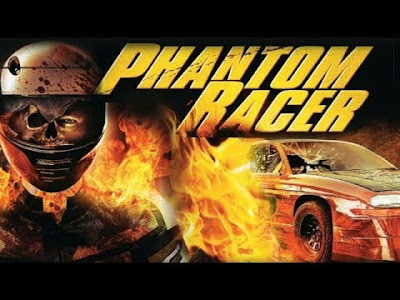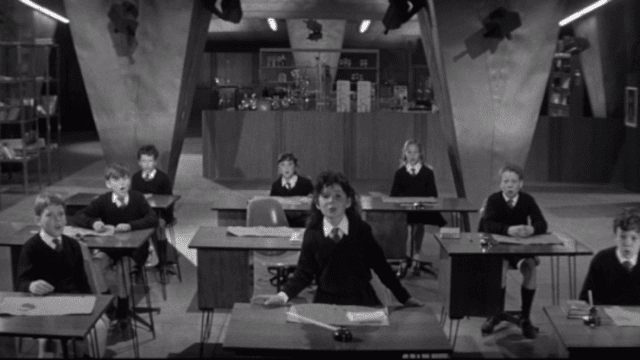PHENOMENALITY: *marvelous*
MYTHICITY: *good*
FRYEAN MYTHOS: *adventure*
CAMPBELLIAN FUNCTIONS: *cosmological, psychological, sociological*
When I analyzed the 1962 origin-storyof Spider-Man, I observed that in terms of structure, the tale
strongly resembled a type of narrative that frequently appeared in
many of the “horror-mystery” genre-works on which Stan Lee and
Steve Ditko had crafted together during that era. The defining trope
for this narrative might be called “the chastened sinner.” In it
some individual, usually more weak than evil, misuses some
supernatural gift. Unlike corrupt protagonists who are doomed by
their sins, chastened sinners survive their brush with the
supernatural and swear not to do bad things again.
Director Sam Raimi and scripter David
Koepp may not have been familiar with the horror-mystery stories on
which Lee and Ditko collaborated. Nevertheless, the script for
SPIDER-MAN seems acutely aware that Peter Parker’s seemingly
accidental acquisition of spider-powers functions in the story as a
Gift from Above. He abuses that gift by not using his power in the
public interest—i.e., to prevent a criminal from escaping the
law—and he pays for his neglect when the same crook murders
Parker’s beloved Uncle Ben. In both the comic and the movie, Parker
is chastened by this development, but goes further by taking on the
role of a crusading superhero. The role is not without its
perks—Parker even out of costume becomes more appealing to girls,
and he continues to enjoy the thrills of spider-powered athleticism.
But his great power doesn’t just create a sense of responsibility.
The costume sometimes becomes more of a hair-shirt, as bad luck
frequently dogs his steps, often making him think of his abilities as
an ongoing curse.
Now, as faithful as Raimi and Koepp are
to the character of Peter Parker and his alter ego, they wreak
considerable changes upon the iconic Spider-villain whom the hero
faces in his theatrical debut. I’ll say right away that I didn’t
care for the redesign of the Green Goblin, from a Halloween-themed
evildoer whose mask nevertheless allowed for lots of facial
expression, to an armored combatant whose face presented the immobile
fierceness some Kabuki visage. I’m sure that the use of the armor
made the substitution of a stunt-double in the fight-scenes, but
damnit, he doesn’t look like a “goblin” in the least (although
he still uses Halloween-themed gadgets, with no more textual
explanation than one got in the original comics).
And yet, if Raimi and Koepp’s Goblin
doesn’t work for me visually, I have to admit that they did a fine
job of making his alter ego Norman Osborn (Willem Dafoe) an
embodiment of another aspect of the Spider-mythos: that of a good
father/ bad father complex.
In the story immediately following
Parker’s loss of his good father Uncle Ben, he encounters a bad
father in the form of his new boss, newspaper publisher J. Jonah
Jameson. Admittedly, Jameson never becomes involved in any way with
the dynamics of Parker’s family. The publisher doesn’t even
emulate the “heavy fathers” of Greek comedy and get in the way
when Parker courts Jameson’s secretary Betty Brant. But whereas Ben
and his wife May kept Parker in the world of the protected child,
Jameson represents the cold cruel world outside the sphere of the
family. Jameson offers Parker, who is committed to stay in high
school, the only avenue by which Parker can earn money for his
bereaved Aunt May. But this nominal benefit—which Parker earns only
because he’s uniquely positioned to obtain valuable photographs of
Spider-Man in action—also forces Parker to associate with a man who
hates Parker’s vigilante identity. Thus, Parker is often obliged to
protect this obnoxious older man from danger, though he also takes
considerable joy in visiting minor humiliations on Jameson.
The Green Goblin of the comics is a
different barrel of pumpkins. In his earliest appearances, the Goblin
is a mystery villain obsessed with destroying Spider-Man, ostensibly
just to cement his reputation as a hotshot super-villain. There’s
nothing remotely paternal about him until issues #39-40 of AMAZING
SPIDER-MAN, wherein it’s definitively revealed that the Goblin is
Norman Osborne, the father of Parker’s college-roommate Harry.
Issue #40, “Spidey Saves the Day,” is particularly masterful in
revealing that Osborne became so obsessed with making money through
his scientific experiments that he utterly neglected his son—which
makes him somewhat homologous with Jameson, also an older man
obsessed with making money.
Obviously, a single Spider-Man movie
didn’t have the luxury of several installments in which to reveal a
mystery villain’s identity. Therefore SPIDER-MAN follows the dual
origin of both hero and villain. Parker, the science-loving nerd with
money troubles (his uncle has just been laid off near the film’s
beginning), receives the gift of DNA from a genetically bred
“super-spider.” In contrast, Osborne, who owns a company but
suffers reversals from his clients and his board members, reacts in
the fashion of Doctor Jekyll imitators everywhere. He tests a
dangerous formula on himself, but soon loses interest in monetary
gain. After murdering his oppressors, this Goblin shows no interest
in becoming a criminal mastermind. Instead he becomes obsessed with
forcing Spider-Man to become as corrupt as he is, because both of
them are “exceptional” beings who ought to be able to do anything
they want to lesser folk. Jameson, too, speaks of bringing Spider-Man
down to Jameson’s level, but Raimi and Koepp exploit the Goblin’s
demonic visage to make him into a Satanic tempter.
Up to this point any readers may have
thought I was writing a review of a GREEN GOBLIN movie. Yet IMO the
script puts much more mythic focus upon the “bad father”
relationship of Parker and Osborne than on Peter Parker’s
acceptance of his heroic destiny. That’s not to say that Raimi and
Koepp don’t do a stellar job in retelling the hero’s origin:
giving him the chance to swat down bullies, woo unobtainable girls
and swing through the skyline of New York like Tarzan amid his trees.
Tobey Maguire’s embodiment of Parker, both as nerd and hero,
remains the definitive rendition of the Lee-Ditko character, and
Kirsten Dunst makes a winsome Mary Jane, reconfigured from a party
girl into a more-nubile-than-average “girl next door.” But all of
Parker’s relationships are threatened when his first and worst
enemy learns his secret identity.
Once or twice Raimi oversells the
“family romance” business. In this iteration, Harry has recently
transferred to Parker’s high school, but in a short space of time
they’ve become boon friends. When Harry first introduced Parker to
Harry’s father, Norman seems unusually taken with Parker,
apparently because Parker, unlike Harry, has a scientific mind. This
preference causes Harry to experience a rather forced “sibling
jealousy.” An end scene, in which Norman tries to claim a paternal
relationship with the hero following a blood-and-guts battle, is so
overplayed that a similar denouement in 1982's CONAN THE BARBARIAN seems
subtle by comparison. Harry wins a few dates with Mary Jane because
Nerd Parker can’t admit he’s liked her for years. But when
“Norman Hyde” first meets Mary Jane, he goes off on a tirade
about gold-digging women that comes out of nowhere. Later, as the
Goblin, he tells Spider-Man that he plans to “have a good time”
with Mary Jane. Is this Freud’s primal father, trying to prey upon
the young woman desired by both of his “sons,” just for the
pleasure of acing them out? Defoe, playing the “over-reactor” to
Maguire’s “under-reactor,” verges on hamminess at times, and
the actor projects much more menace in his quieter scenes.
Other supporting players acquit
themselves admirably, with the standout being J.K. Simmons as
Jameson. Interestingly, even though Jameson usually comes off as an
ass, Koepp includes a moment in which he becomes somewhat protective,
as he rarely was in the Lee-Ditko comics. In this scene, the Goblin
attacks the Daily Bugle, having decided that the only way to find
Spider-Man is to find the photographer who’s been able to take the
hero’s pictures so readily. The villain threatens the publisher’s
life for the identity of the photographer, and although Parker is
standing nearby Jameson doesn’t betray his employee but tries to
lie to the super-fiend. Parker dons his spider-gear and saves
Jameson’s life, though the publisher can’t resist taking a verbal
shot at the hero, thus earning himself a mouthful of webbing.
For all the brickbats aimed at CGI
effects, I can’t imagine any live-action film succeeding at
emulating the acrobatics of Spider-Man without them. The only
downside of the copious fight-scenes is that “armored Goblin”
doesn’t offer a lot of mobility. However, in the succeeding film,
the effects-meisters would outdo themselves in fluidity during the
encounters between the athletic wall-crawler and a certain tentacled
terror.









